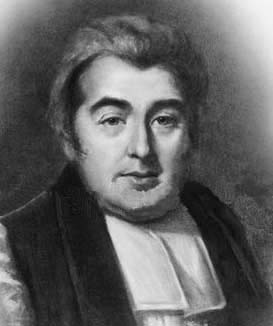Related Research Articles

William Thomson, 1st Baron Kelvin, was a British mathematician, mathematical physicist and engineer born in Belfast. He was the Professor of Natural Philosophy at the University of Glasgow for 53 years, where he undertook significant research and mathematical analysis of electricity, the formulation of the first and second laws of thermodynamics, and contributed significantly to unifying physics, which was then in its infancy of development as an emerging academic discipline. He received the Royal Society's Copley Medal in 1883, and served as its president from 1890 to 1895. In 1892, he became the first British scientist to be elevated to the House of Lords.

In celestial mechanics, the Roche limit, also called Roche radius, is the distance from a celestial body within which a second celestial body, held together only by its own force of gravity, will disintegrate because the first body's tidal forces exceed the second body's self-gravitation. Inside the Roche limit, orbiting material disperses and forms rings, whereas outside the limit, material tends to coalesce. The Roche radius depends on the radius of the first body and on the ratio of the bodies' densities.

Armand Hippolyte Louis Fizeau FRS FRSE MIF was a French physicist, who in 1849 measured the speed of light to within 5% accuracy. In 1851, he measured the speed of light in moving water in an experiment known as the Fizeau experiment.
The year 1850 in science and technology involved some significant events, listed below.
The year 1894 in science and technology involved some significant events, listed below.

John Mortimer Brinkley was the first Royal Astronomer of Ireland and later Bishop of Cloyne. He was President of the Royal Irish Academy (1822–35), President of the Royal Astronomical Society (1831–33). He was awarded the Cunningham Medal in 1818, and the Copley Medal in 1824.
The year 1840 in science and technology involved some significant events, listed below.
The year 1819 in science and technology involved some significant events, listed below.
The year 1781 in science and technology involved some significant events.
The year 1896 in science and technology involved some significant events, listed below.
The year 1851 in science and technology involved some significant events, listed below.
The year 1855 in science and technology involved some significant events, listed below.
The year 1883 in science and technology involved some significant events, listed below.
The year 1859 in science and technology involved some significant events, listed below.
The year 1849 in science and technology involved some significant events, listed below.

John Stringfellow was a British early aeronautical inventor, known for his work on the aerial steam carriage with William Samuel Henson.
Events from the year 1848 in the United Kingdom.
Robert William Mylne, FRS FRSE FGS FRIBA was an English architect, civil engineer and geologist.

The Death of the Earl of Chatham is the title of a 1781 oil-on-canvas painting by Boston-born American artist John Singleton Copley. It depicts the collapse of William Pitt, 1st Earl of Chatham on 7 April 1778, during a debate in the House of Lords on the American War of Independence. Chatham is surrounded by peers of the realm, and the painting contains fifty-five portraits.
In 1848−49, Hippolyte Fizeau used a toothed wheel apparatus to perform an absolute measurement of the speed of light in air.
References
- ↑ Baalke, Ron. "What is the Roche limit?". Frequently Asked Questions About Saturn's Rings. JPL. Archived from the original on 1999-11-05. Retrieved 2013-02-18.
- ↑ "The Sun – History". 2001-11-25. Retrieved 2012-01-08.
- ↑ Storey, G. D. (October 2001). "Alfred Baring Garrod (1819-1907)". Rheumatology . Oxford. 40 (10): 1189–90. doi: 10.1093/rheumatology/40.10.1189 . PMID 11600751.
- ↑ Silver, George A. (January 1987). "Virchow, the heroic model in medicine: health policy by accolade". American Journal of Public Health . 77 (1): 82–88. doi:10.2105/AJPH.77.1.82. PMC 1646803 . PMID 3538915.
- ↑ Weisstein, Eric W. (1996). "Kelvin, Lord William Thomson (1824–1907)". Eric Weisstein's World of Scientific Biography. Wolfram Research Products. Retrieved 2007-03-12.
- ↑ Year-book of Facts. 1848.
- ↑ Fizeau, Hippolyte. "Acoustique et optique". Unpublished lecture to Société Philomathique (Paris), 29 December 1848; Scott Russell, John (1848). "On certain effects produced on sound by the rapid motion of the observer". Report of the Eighteen Meeting of the British Association for the Advancement of Science. London: John Murray. 18 (7): 37–38. Retrieved 2013-07-29.
- ↑ Boucher, A. (1848). "Note sur la construction des voûtes biaises au moyen d'une série d'arcs droits accolés les uns aux autres" [Notes on the construction of skewed vaults by means of a series of right arches built one against the other]. Annales des Ponts et Chaussées. Paris: 234–243.
- ↑ The Geek Atlas: 128 Places Where Science and Technology Come Alive. O'Reilly Media, Inc. 21 May 2009. p. 445. ISBN 9780596555627.
- ↑ "Henson and Stringfellow". Flight . 1956-02-24 – via Flight Global.
- ↑ "Copley Medal | British scientific award". Encyclopedia Britannica. Retrieved 23 July 2020.